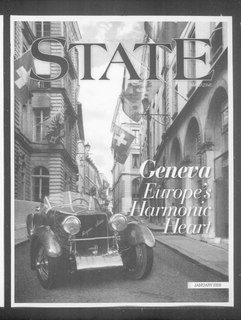Related Research Articles

A magazine is a periodical publication which is printed in gloss-coated and matte paper. Magazines are generally published on a regular schedule and contain a variety of content. They are generally financed by advertising, by a purchase price, by prepaid subscriptions, or by a combination of the three.
The words homophile and homophilia are dated terms for homosexuality. The use of the word began to disappear with the emergence of the gay liberation movement of the late 1960s and early 1970s, replaced by a new set of terminology such as gay, lesbian, and bisexual.
CODEN – according to ASTM standard E250 – is a six character, alphanumeric bibliographic code, that provides concise, unique and unambiguous identification of the titles of periodicals and non-serial publications from all subject areas.
The Telegraph was a fan-oriented periodical about the work of Bob Dylan and musicians associated with Dylan. It was published in Manchester, England, in 56 issues from November 1981 until the "Winter" of 1997. By that date, it had a circulation of about 3,500, of which England accounted for roughly half.

Periodical literature is a category of serial publications that appear in a new edition on a regular schedule. The most familiar example is the magazine, typically published weekly, monthly, or quarterly. Other examples of periodicals are newsletters, academic journals and yearbooks. Newspapers, often published daily or weekly, are, strictly speaking, a separate category of serial. Periodicals are most often referenced by volume and issue. Periodicals have a set period and can be classified as popular and scholarly. Indefinite periodicals have an indefinite production cycle and have no plans to stop publishing. Periodicals use the International Standard Serial Numbers a standardized reference number. Periodicals often have a preferred and lower for postal distribution.
NS Månedshefte was a Norwegian periodical.

The V.V. Vinogradov Russian Language Institute of the Russian Academy of Sciences is the language regulator of the Russian language. It is based in Moscow and it is part of the Russian Academy of Sciences. It was founded in 1944 and is named after Viktor Vinogradov. Its activities include assessment of speech innovations in comparison to speech norms and codification of the language in Russian literature. Their output from these endeavors has included dictionaries, monographs, computer collections and databases, as well as a large historical Russian music library. They also provide a reference service of the Russian language. The Institute publishes thirteen academic journals. In addition, the Institute published 22 scholarly books in 2013 and 27 in 2012, with many more in previous years.
Norsk-Tysk Tidsskrift was a Norwegian periodical, in existence during the German occupation of Norway.

A volume is a physical book. It may be printed or handwritten. The term is commonly used to identify a single book that is part of a larger collection. Volumes are typically identified sequentially with Roman or Arabic numerals, e.g. "volume 3" or "volume III", commonly abbreviated to "Vol.".
Veien frem was a Norwegian periodical.

Kaj Skagen is a Norwegian writer. He received the Riksmål Society Literature Prize in 1991. His first book Gatedikt was published in 1971. From 1978 to 1989, he published and edited the periodical "Arken". In 1982 he won the first prize of a national novel contest with the novel Broene brenner. In 1983 he published Bazarovs barn, a harsh critique of contemporary Norwegian literature.
Arne Ording was a Norwegian historian and politician for Mot Dag and the Labour Party.
Lovdata is a foundation which publishes judicial information of Norway.
Nyt Tidsskrift is a former Norwegian literary, cultural and political periodical issued from 1882 to 1887, and with a second series from 1892 to 1895. The periodical had contributions from several of the leading intellectuals of the time, including later Nobel Literature Prize laureate Bjørnstjerne Bjørnson, later Nobel Peace Prize laureate Fredrik Bajer, the writers Alexander L. Kielland, Jonas Lie, Arne Garborg and Hans Aanrud, proponents for women's rights Camilla Collett, Gina Krog and Hagbard Emanuel Berner, and painter Erik Werenskiold.
Proletaren was a Norwegian periodical published by the Communist Party.
Gnisten was a Norwegian periodical published by the Communist Party.
Ukens Revy was a Norwegian periodical, published in Oslo.
Norsk Militært Tidsskrift is a Norwegian journal first issued in 1831, and published by Oslo Militære Samfund from 1835. The original title of the periodical was Militairt Tidsskrift. It has been issued continuously since 1831, and is among the oldest journals published in Norway.
The Norwegian Bridge Federation founded in 1932, is the national body for bridge in Norway.
Norsk Sjakkblad is a Norwegian chess periodical published by the Norwegian Chess Federation. It serves as a member's magazine for the federation, but is available to subscribers as well. Common topics include tournament news, results, national rating lists and annotated games.
References
- ↑ Sørensen, Øystein (1984). 1880-årene. Ti år som rystet Norge (in Norwegian). Oslo: Universitetsforlaget. pp. 92–93. ISBN 82-00-06966-4.